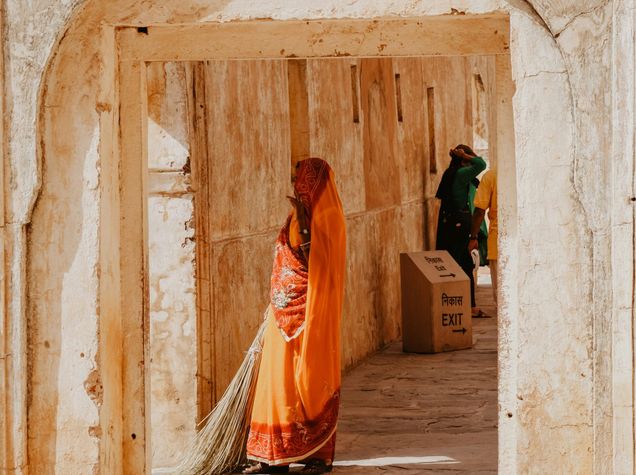Seminar Summary – The Patriarchal Political Order: The Making and Unravelling of the Gendered Participation Gap in India

On April 10, 2024, the Human Capital Initiative hosted Soledad Artiz Prillaman for the third Spring Research Seminar, “The Patriarchal Political Order: The Making and Unravelling of the Gendered Participation Gap in India.”
Prillaman is an Assistant Professor of Political Science at Stanford University and the faculty director of the Stanford Inclusive Democracy and Development Lab. Her seminar focused on her recent book, “The Patriarchal Political Order: The Making and Unraveling of the Gendered Participation Gap in India,” which analyzes qualitative and quantitative data from more than 9,000 women and men in India to expose how coercive power structures diminish political participation for women. Within the book, she also examines existing programs that aim to bolster women’s agency in the household and push for political representation.
Prillaman began by highlighting the gendered discrepancy in non-voting political participation. Though voting rates in both local and state elections were similar among men and women, women participated in non-voting political activities at a much lower rate. Prillaman hypothesizes that women’s participation is a function of other household members’ costs and benefits to participation and that their agency is strongly limited within household political participation decisions. Her research in rural India shows that households cooperate in political decision-making and that men dominate household voting decisions due to the overwhelming patriarchal power imbalance supported by societal norms, legal institutions, as well as men’s control over household resources. Women are incentivized to accept household voting decisions because this contributes to maximizing their household’s welfare, yet Prillaman also shows that women’s voting participation can be spurred by threats or coercion from male household members.
Her methodology included two original surveys in 2016 and 2019, as well as semi-structured qualitative interviews with 200 randomly sampled men and women. She used these data to conduct a network census and analysis to understand the different social and political networks within these communities. She defined a political network as those with whom one discusses politics, and a social network as those with whom one socializes and spends their free time. She aimed to examine the impacts of the mobilization of women’s community groups alongside gender consciousness-raising programs within those groups.
The study finds that women do not feel as if they have agency over their voting choices or opportunities for other forms of political participation. There is a high cost for women participating in politics; in the interviews, women’s stated reasons for not participating in a political public meeting included not having enough time, care duties or that there already was another family member attending. Almost 20 percent of the women stated that they explicitly were not allowed to attend the meeting, which Prillaman says is a clear indication of coercion. Aside from lack of agency and coercion, Prillaman showed that political networks are centered around and primarily include men, with women sitting much more on the periphery, dispersed and isolated in pockets throughout the network. Women do not register as political actors to men and were not often stated as members of men’s political networks during surveys.
In terms of possible solutions, Prillaman argues that women will participate more actively in politics when they gain more autonomy in the household and build solidaristic ties with other women that lead to collective action. This was supported by her analysis of the gender consciousness-raising program intervention within women-only weekly credit collectives. Participation in these women’s groups alone increased non-voting political participation and spurred collective mobilization through policy advocacy, and women who received the gender consciousness-raising programming participated in politics at even higher rates. However, as Prillaman emphasized, collective action is costly. There was strong backlash from both male and female community and family members towards women who participated in gender consciousness-raising programs. Prillaman says this highlights the need for systemic change to fight against gender norms hindering women’s opportunities for political participation and that individual interventions can only go so far within a society that does not encourage women’s political agency.
This discussion spurred thoughtful questions and conversation from the audience, including one participant who inquired about whether giving women greater household autonomy correlates to changes in norms. Prillaman answered that this is a complex issue, as challenging norms can lead to strong backlash and that this is difficult to measure. Another audience member asked about the meaning of “household bargaining,” which Prillaman clarified to encompass whole household bargaining rather than just spousal. Household political cooperation also increases the household’s value as a voting unit in instances of vote buying.
Prillaman concluded with the assertion that women achieve autonomy in the household when they gain the ability to contest resistance. This study has strong implications for understanding village governance and women’s patterns of political behavior as well as how norms, social capital and legal governance uphold the patriarchal political order.
*
Never miss an update: Subscribe to the Human Capital Initiative newsletter.